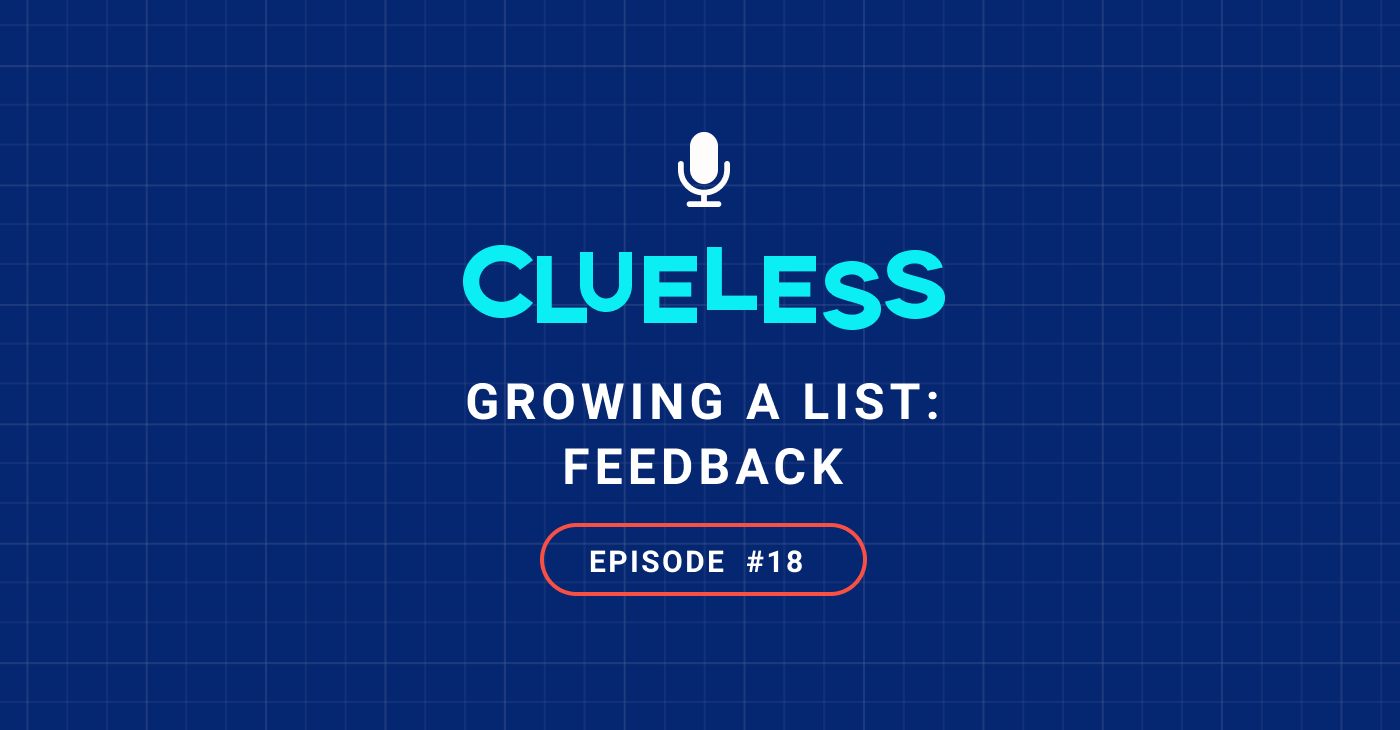
00:22 Andy Shore: Welcome back to Clues for the Clueless Email Marketer, we’re wrapping up our conversation about exit intent pop-up forms and how they relate to growing your email list. And this last one, we’re gonna talk about is a feedback request.
00:36 Daniel Miller: Yeah, so a feedback request, I think now more than ever, where data is so prevalent in our lives, feedback is essential. If you aren’t collecting feedback, oh, I don’t know what to tell you. Find a way to do it because you can get so much information that was right there in front of you and you didn’t know ’cause you didn’t ask. So feedback is very important. Now, how does an exit intent form come to play into getting feedback? Well, like we just said in the previous episode, when people are searching for products on your site, they may not find it, they may go to exit out of your website. That’s a great moment to show a pop-up form to ask them, “Hey, did you not find what you were looking for? Please tell us so we can improve.” You’re doing two things there. As we mentioned, you’re getting the email address to engage with them, as well as you’re learning how to improve your website and overall buying experience.
01:25 DM: The other thing that we can use a feedback request form on, and this one, I wouldn’t do it for every single time that this happens, but if somebody completes a purchase, they get to that thank you page. Maybe ask them about that buying cycle, how was the cart process for them and get feedback. Again, you are achieving two things, you are getting feedback from a customer, and you’re getting an email to somebody that you can maybe create an automation for, to then ask them to write a public review somewhere else.
01:53 AS: Yeah, definitely. And like Daniel was saying, depending on where they encounter in the process, it’s helping a new customer feel special and that they’re valued. It’s like, “Hey, we appreciate what you have to say. Not just that you’re a customer, we’re always gonna thank you and appreciate you for that, but we value you to the extent that we wanna hear your opinion. So tell us what this process was like. How can we improve it? How can we make this better for you?” That it’s gonna make those customers you’ve just got feel even more important or if it comes earlier in the process, and… The best feedback you get sometimes is from the angry people. We’ve read the ask book and it talks about you wanna hear from those passionate people, whether they’re real happy or real angry either way. That’s the most valuable feedback you’re getting. So maybe they were attracted to your site through an ad or through SEO or something that brought them in, but it wasn’t exactly what they were looking for. And they might not be thrilled or maybe they just wanna tell you that, you’re gonna understand the type of people you’re attracting to your website and maybe the work you need to put in in certain other areas to make sure you’re attracting your core customer.
03:01 DM: Yeah, and one thing that I wanna point out. Timing is everything with this one as well. What I mean by that is… Well, I guess, because we’re talking about an exit intent, that makes sense, but this whole conversation brought me back to, I forget what website I was on, but I was blown away that they actually did this. It was a site, we could say a company as big as like a Microsoft, something like that. And I was on their website, and I literally just landed on it. And it said give us feedback on our website. It’s like, “Guys, I just landed on here. Are you seriously asking me to give you feedback on your website? Well, the feedback is don’t give me this pop-up until at least I’ve browsed through it,” right? So when it comes down to it, I think the exit intent is good here because it’s as they’re leaving, you’re asking for that feedback. Do not try to do something, do not ask for feedback as soon as they get in. If you wanna do a different type of pop-up and ask for feedback, try to set the rule to somebody that’s visited at least five to 10 pages, something like that, to where they’re actually gonna give you feedback that matters, not somebody that just landed on your home page and you’re already asking for feedback.
04:03 AS: Definitely. And so just to recap what we’ve been talking about with these exit intent forms, we’ve talked about the reason for doing them is it’s that last-ditch effort, last line of defense, Hail Mary, whatever other cliche we wanna throw in there that that effort, it’s just gonna… As someone’s walking out the door, leaving your website, you’re gonna try and lasso them back in with this exit intent form. And you might wanna do that with freebies, discounts, special offers and if they’re about to leave your shopping cart to make the sale right then and there or be able to follow up with an abandoned email, doing it with related products, in case they didn’t find what they were looking for, and last but not least, as we’ve been talking about this episode, to get feedback. So there’s a lot of value in an exit intent form, a lot of ways to help you grow your list. We hope you explore them and tell us how you’re using that on social media at @benchmarkemail. We wanna hear all about it. Our interns will be thrilled, you’re chatting with them too. Thanks, everyone for listening and we’ll catch you next time.




